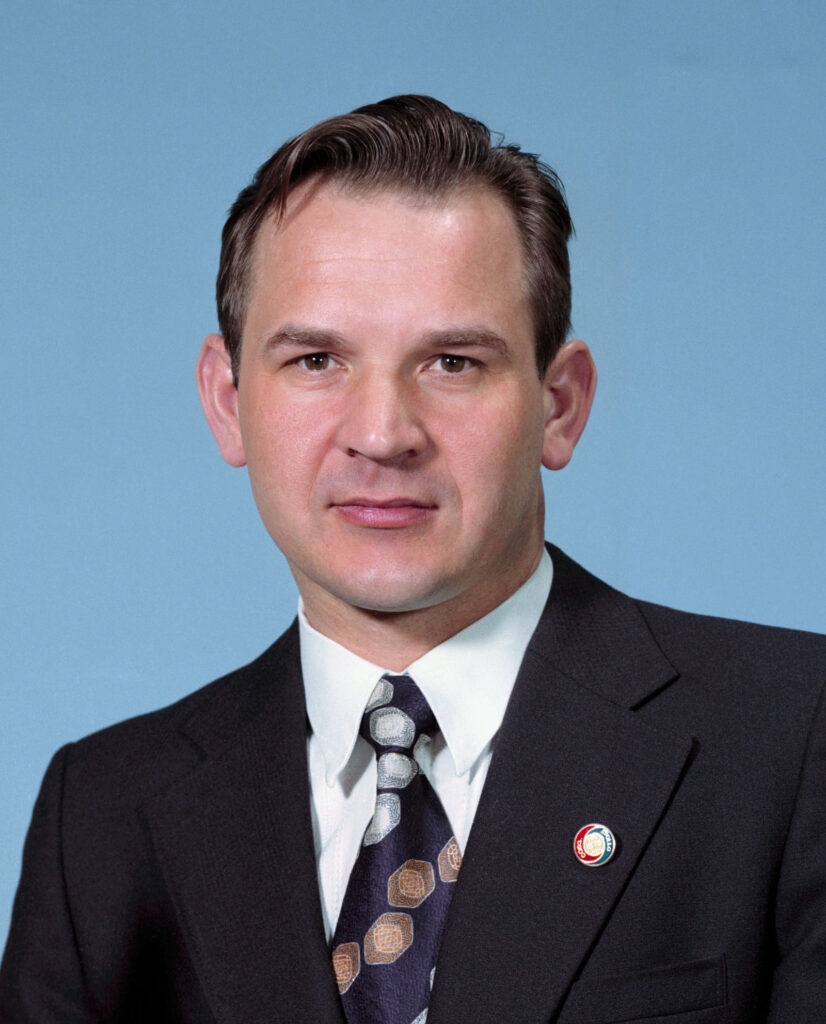The Chief Designer of the Soviet Space Program.
Valery Nikolayevich Kubasov was born on January 7, 1935, in Vyazniki, USSR. After finishing secondary school in 1952, he entered the Moscow Aviation Institute. During his studies there, he displayed an inclination for theoretical research. After graduating in 1958, he started to work at a design bureau. He is the author of several studies dealing with the calculation of spaceship trajectories and has a Master of Science degree in Engineering.
In 1966, Kubasov was accepted into the cosmonaut program and took a complete course of space-flight training. He first entered space as the flight engineer of Soyuz-6, taking part in a group space flight with spaceships Soyuz-7 and Soyuz-8 from October 11 to 16, 1969. On board the Soyuz-6 he conducted experimental welding in outer space, an important step toward the eventual construction of the world’s first space station, Salyut-1 (launched on April 19, 1971). Kubasov was assigned to the first crew to occupy Salyut 1 but was replaced when he fell ill, as was the rest of his crew. The three-member crew that did fly, however, died on June 29, 1971, during reentry, when an air valve failed.
Kubasov’s second space mission was as a flight engineer on the Apollo-Soyuz Test Project (ASTP). After lifting off from Baikanor Cosmodrome on July 15, 1975, Kubasov and Alexei Leonov, the other Soyuz 19 crewmember, spent 5.94 days in space, linking up with the American Apollo spacecraft on July 17. Apollo 18 was launched seven and a half hours later, carrying astronauts Tom Stafford, Deke Slayton, and Vance Brand. After docking in space, the two countries’ crewmembers rotated between the Soyuz and Apollo spacecraft and conducted mainly ceremonial activities. Leonov was on the American side for five hours and 43 minutes, and Kubasov spent almost five hours in the Apollo command and docking modules.
After nearly 44 hours, Apollo and Soyuz parted for the first time to a “station-keeping” range of 160 feet. The Apollo crew placed its craft between Soyuz and the Sun so that the diameter of the service module formed a disk, which blocked out the Sun. After this experiment Apollo moved towards Soyuz for the second docking.
Three hours later, Apollo and Soyuz undocked for the second and final time. The spacecraft moved to a 130-foot station-keeping distance so that an ultraviolet absorption experiment could be performed. With all the joint flight activities completed, the ships went on their separate ways and Soyuz 19 landed safely on July 21, 1975. The ASTP marked many firsts, including the first international manned mission, the first rendezvous between two manned spacecraft and the first exchange of crews between spacecraft of two different nations.
Valery Kubasov made his last spaceflight as commander of Soyuz 36, launched from Baikanor on May 26, 1980. During a flight of 7.87 days, the Soyuz transported the fifth international crew under the INTERCOSMOS program, comprising Kubasov and Bertalan Farkas, the first Hungarian cosmonaut, to the Salyut-6 space station to carry out scientific research and experiments. They returned to Earth aboard Soyuz 35 on June 3. Kubasov retired from cosmonaut service on November 13, 1993. In his three flights, he logged 18.75 days in space. Valery Kubasov was later deputy director of RKK Energia, a Russian manufacturer of spacecraft.

